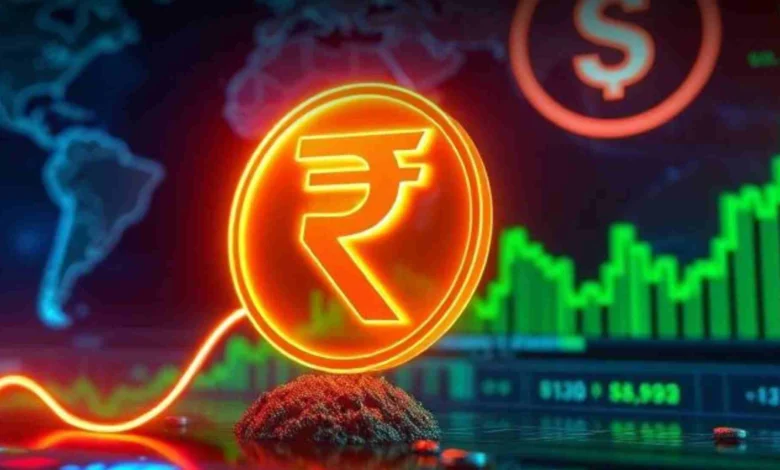Indian Rupee Drops to Rs85.59 Amid Strong US Dollar and Rising Geopolitical Tensions

| Get instant news updates: Click here to join our Whatsapp Group |
The Indian rupee continued to weaken on Thursday, opening 17 paise lower at ₹85.59 against the US dollar. This marks a 0.16% drop for the month, reflecting pressure not just on the rupee but on several Asian currencies. The main reason behind this trend is the growing strength of the US dollar, which has been rising due to strong American economic data and hints from the US Federal Reserve that interest rates might stay high for longer.
Adding to the pressure are geopolitical tensions. A terror attack in Pahalgam, Jammu & Kashmir, has increased worries about regional stability. This incident has raised fresh concerns among investors and added to the nervousness in currency markets.
Why Is the Dollar Rising?
The US Dollar Index, which measures the dollar’s strength against a group of currencies, bounced back from a recent low of 97.92 to 99.94. This was partly due to hopes that tensions between the US and China might reduce. However, some uncertainty remains. US Treasury Secretary Scott Bessent recently clarified that President Trump has not committed to cutting tariffs, despite earlier reports. This mixed message has left global markets unsure about what’s next.
Foreign Investors Still Buying Indian Stocks
Interestingly, despite the fall in the rupee, foreign institutional investors (FIIs) continue to show confidence in Indian markets. On Wednesday alone, FIIs bought stocks worth over ₹3,300 crore. This was the sixth day in a row of net inflows, with over ₹21,200 crore coming into Indian stocks in just four days. Investors seem encouraged by strong corporate earnings and stable economic conditions in India, which has helped reduce the rupee’s downward pressure.
Oil Prices Rise Slightly – What It Means for the Rupee
As of 10 AM, global oil prices edged up slightly. Brent crude went up by 0.09% to $66.18 per barrel, while WTI crude increased by 0.05% to $62.30 per barrel. These movements come amid discussions that oil-producing countries under the OPEC+ group may increase output. Higher oil prices usually hurt India’s economy, as the country imports most of its oil. Rising crude prices can lead to higher inflation and increased import bills, putting extra pressure on the rupee.
What Is the RBI Doing About the Falling Rupee?
The Reserve Bank of India (RBI) is closely watching the situation. While it hasn’t taken major action yet, it is prepared to intervene in the forex market if needed. Thanks to India’s strong foreign exchange reserves, the RBI has enough resources to stabilize the rupee if the situation worsens. For now, it is allowing the rupee to adjust based on market forces. India’s economy is still doing fairly well, with steady GDP growth and controlled inflation, but rising imports and a widening current account deficit are concerns.
What to Expect in the Coming Days
Traders are keeping a close watch on key technical levels for the rupee. Right now, support is seen around ₹85.80, and resistance near ₹85.20. If the rupee breaks through these levels, it could move more sharply in either direction. The currency’s recent behavior shows how closely it’s tied to global developments, from oil prices to foreign investment trends.
Conclusion
The rupee’s fall to ₹85.59 shows how global economic changes and geopolitical risks are affecting India’s currency. While foreign investments and the RBI’s careful approach are helping keep things steady for now, the future remains uncertain. In the coming weeks, much will depend on how global interest rate policies, trade relations, and domestic economic indicators evolve. Investors and traders alike will be watching closely to see if the rupee can regain strength or if more volatility lies ahead.
